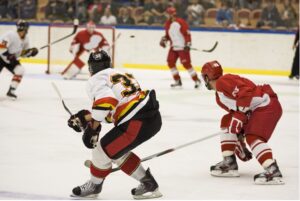The Strength Sensei on Concentrated Training Blocks
How to get a lot of hard work done in a short period
Charles R. Poliquin believed that training is both a science and an art. He intensely studied research journals (often on his long flights) and attended seminars by leaders in their fields. That’s the science part. The art was finding creative ways to apply the science. One example is his use of concentrated training blocks.
The Strength Sensei said that with most of his high-profile athletes, he would only have about three months in their off-season to train them. One of his primary sports in his early years as a strength coach was hockey. If a team made it to the finals of the Stanley Cup, and you include training camps, you’re looking at an off-season training period of maybe two months. The bottom line is that with so little time, you have to train smart. This is where concentrated training blocks come in.
Whenever the Strength Sensei began training athletes, he started with a thorough assessment to determine muscle imbalances in the upper and lower body. The Strength Sensei often finds that where the primary muscle groups used in a sport maintain or even increase their strength during the season, other muscles become relatively weaker and increase the risk of injury. Case in point: alpine skiers.
 NHL athletes have relatively short off-seasons, such that if they made it to the Stanley Cup Finals, their off-season might only last two months.
NHL athletes have relatively short off-seasons, such that if they made it to the Stanley Cup Finals, their off-season might only last two months.
In the 80s and 90s, the Strength Sensei worked for the Canadian National Ski Team. In the 1992 Olympics, five of his athletes won medals. Seven of his athletes won medals two years later at the 1994 Olympics. Equally impressive is that none of his athletes required knee surgery under his watch, whereas there was a 100 percent chance they would need surgery if they were on the team for five years before he took over!
The Strength Sensei found that skiers in-season could often maintain the strength level they developed in their quads during the off-season. That’s the good news. The bad news is that the sport didn’t have the same strength-training effect on the hamstrings, creating a muscular imbalance between knee extensions and flexors. Such an imbalance increases an athlete’s risk of knee injuries.
To bring the hamstrings up to par quickly, the Strength Sensei’s workouts for skiers during the off-season often began by focusing on increasing hamstring strength. [FYI: The Strength Sensei would determine quad/hamstring imbalance by comparing an athlete’s 1-repetition maximum (1RM) back squat to their 1RM front squat. An optimal ratio would be to have your front squat be 85 percent of your back squat.]
Here is an example of an actual workout the Strength Sensei used with his skiers during a three-week concentrated loading block. For three weeks, he would begin his leg workouts with a Negative Accentuated Neutral Lying Leg Curl, where you would lift the weight with two legs and lower it with one. This method would enable an athlete to overload the eccentric portion of the lift; when the Strength Sensei wanted to get athletes strong in a hurry, he prescribed workouts emphasizing eccentric overload.
The loading paraments for this leg curl were as follows: 6 x 4-6, 5010, rest 120 seconds –yes, 6 sets! This was the first exercise in the workout (i.e., priority training) because this is when the athlete was fresh and could apply maximum effort. (Note: The precise tempo prescribed in this workout was 501. Later, the Strength Sensei expanded on the 3-digit formula created by Strength Coach Ian King with a fourth digit representing the second isometric pause).
Negative emphasis and priority training were two tools that can be used in concentrate training blocks to bring up lagging muscle groups. Another method, primarily reserved for more advanced athletes, was training a specific bodypart twice on the same day. One variation of twice-a-day training was based on the work of Canadian strongman Doug Hepburn.
With this training variation, you would perform your first workout with a relative strength protocol (high sets and low reps, such as 6 x 2-3) and perform your second workout with a functional strength protocol (moderate sets and medium reps, such as 5×5). With twice-a-day training, the Strength Sensei said it was critical to allow at least four hours between training sessions for the nervous system to recover adequately.
Concentration training blocks enable you to make significant progress quickly but should only be performed for short periods to avoid stagnation. In our skier example, if the Strength Sensei only had three months to train an athlete, the first six weeks might be devoted to concentrated loading (i.e., three weeks of accumulation and three weeks of intensification), followed by a more conventional workout for the second three weeks.
Charles R. Poliquin’s workouts were designed to achieve specific goals, and concentrated training blocks were one training method he used to get athletes in shape in a hurry. He also insisted that his workouts be performed exactly as written (seriously – exactly!) and that his clients provide feedback so he could make necessary adjustments on the next workout. It’s the Strength Sensei Way. (TSS)

